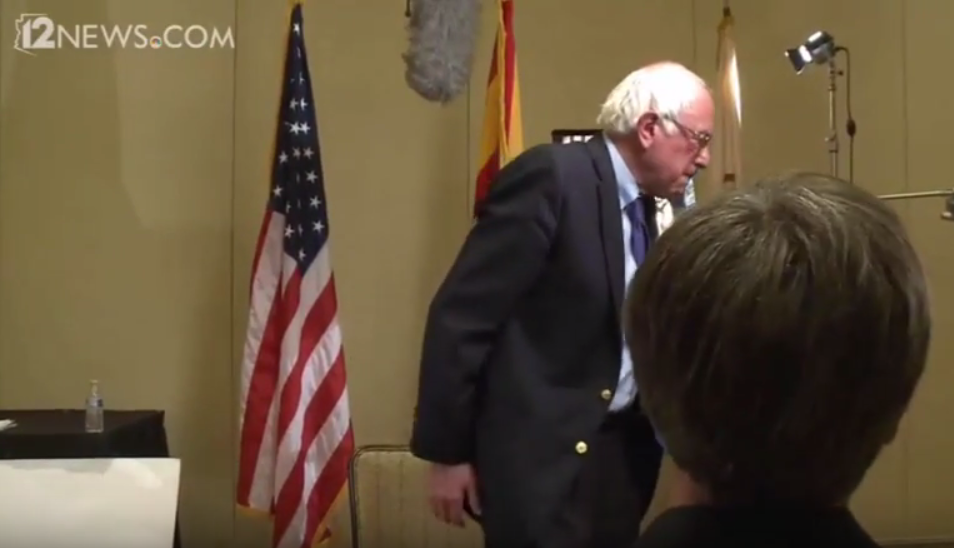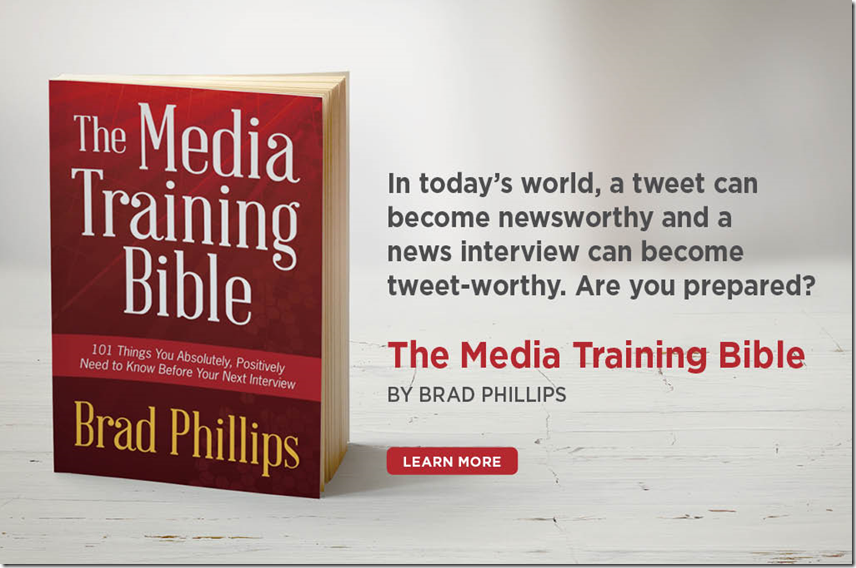The Bernie Sanders "Walk Off": Four Options When Reporters Go Long
A reporter from NBC’s Phoenix affiliate interviewed Sen. Bernie Sanders (D-VT) late last week regarding his chances in Tuesday’s Arizona Democratic primary.
After answering one of the reporter’s questions, Mr. Sanders stood, removed his microphone, and made clear the interview was over. The resulting video was posted to the KPNX website with the following headline:
“Bernie Sanders Walks Out of Interview”
On the surface, that appears like a reasonable headline—but a few relevant facts make clear that’s not exactly what happened. And it leads to a question: What could Sanders have done better?
The video above, posted to YouTube, is a bit ambiguous. (Video is no longer available.) The more complete clip, which is here, shows Sanders ending the interview—but then telling the reporter that he had exceeded the four-minute interview window that had been agreed to in advance. Sanders did the exact opposite of walking out—he sat back down, seemingly to prepare to speak to another reporter. What’s true is that Sanders ended the interview in a rather abrupt manner, although he offered a perfunctory “thank you” twice.
Here’s the key exchange at the end, as reported by BuzzFeed:
“I told you you had four minutes. You had more than four minutes,” Sanders told Resnik after the interview ended. “I didn’t walk away, you persisted.”
“I’m a reporter,” Resnik replied. “That’s what we do.”
“Don’t say I walked away,” Sanders chided Resnik. “You got four minutes…that was the time that was allotted.”
It’s not unusual for such time agreements to be breached by reporters—they often go until they’re stopped—and all Sanders did was enforce the terms to which they agreed, albeit in his typical gruff manner.

But leaving aside the ethically questionable headline about Sanders “walking out,” there’s a broader question: What can spokespersons do when the time window to which they agreed in advance expires? Here are four ideas.
1. End The Interview
This is what Sanders did. Such abrupt endings can lead to negative headlines and compelling video that ends up getting extensive television airplay and going viral online. The audience isn’t always clear on who’s in the right—so the spokesperson can suffer an unfavorable press hit even if they’re right on the facts.
2. Continue The Interview
Many times, the better of two imperfect options is to let the interview go a bit longer. That many not have been possible in this case, as I suspect Sanders is operating on a tight schedule. But it’s clear he wasn’t in any “trouble” in this interview—he was answering challenging but predictable questions with relative ease—and had a reasonable chance of keeping it going without creating a harmful gaffe. The downside of this approach? The more you say, the more likely it is that you will eventually stray.

3. Have The PR Pro End The Interview
With this approach, the PR pro would jump in at the four-minute mark and cut off the interview. The downside of this approach is that it can look like the principal is being “saved,” which doesn’t always play well and can attract its own negative headlines.
4. Use Option Three—With A Twist
One final approach—my favorite in this case—is to have the PR pro jump in at the four-minute mark, but then have the principal say, “That’s okay, let him ask one more question.” In that way, you bring the interview to a close, but in a manner that makes the spokesperson look more open, even generous.
In the clip below, a PR pro attempted to cut off an interview in an inappropriate manner (I’m suggesting something much more graceful than this in option three). But watch how well former Secretary of State Colin Powell handled the moment in a now infamous 2004 Meet The Press clip.



Dear Brad,
Good article. However, in this case I think something else was going on which you didn’t address (either re this specific incident or in general). Sanders seemed peeved by the last question! He couldn’t have been that upset about the interviewer going over the 4-min. time limit by 30 seconds!
I think your suggestions for an exit strategy are still valid. But, I think Sanders should not have let on that he was peeved by the last question. He appeared to have terminated the interview (not sure I’d call that “walking out”) based on that last question rather than the time limit.
Pat Carlson
Hi Pat,
Thanks for your comment. The problem with trying to figure out whether Sanders was peeved by the final questions is that he always seems somewhat peeved!
Seriously, he had started to get up before the “final” final question. If it’s the one before that (about Sheriff Arpaio) you’re referring to, he seemed to give a fine enough answer, complete with a bridge. But to your basic point, you’re right — I don’t know whether he was actually peeved by the questions, annoyed by the reporter, late for lunch, or tired from campaigning. I left out his motivations only because I didn’t feel I had a solid handle on them. It’s possible he was annoyed by the question.
Thanks, as always, for reading and commenting.
Best,
Brad